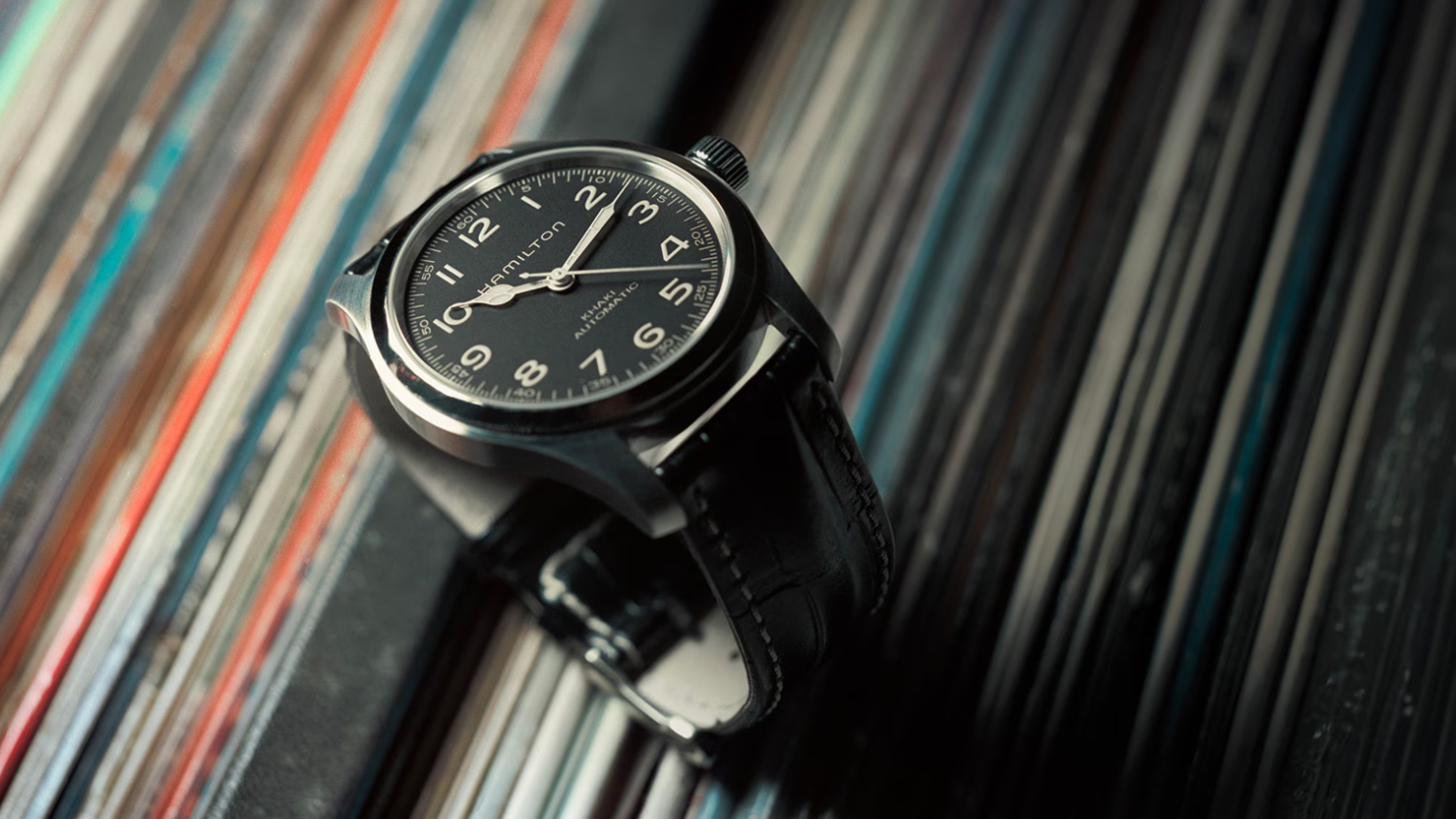terms you should know
watch enthusiast knowledge with clarity
A
Automatic (Self-Winding) – A mechanical movement that winds itself using the motion of the wearer’s wrist. No battery required.
Aperture – A small window on the dial that displays information, such as the date or moon phase.
Analog Display – A traditional display using hands (hour, minute, second) rather than a digital screen.
Anti-Magnetic – Refers to watches built to resist magnetic fields, which can otherwise disrupt movement accuracy.
B
Balance Wheel – The oscillating wheel that regulates timekeeping in a mechanical watch.
Bezel – The ring surrounding the dial or crystal. It may be fixed or rotatable, often used for timing (especially in dive watches).
Bracelet – The metal band of a watch, usually made of stainless steel, titanium, or precious metals.
Bridge – A plate that holds the movement’s components in place.
C
Caliber – The specific model or type of movement inside a watch. Each brand or manufacturer may have unique calibers.
Chronograph – A watch with a built-in stopwatch function, often with subdials measuring elapsed time.
Chronometer – A watch certified for superior accuracy, typically by the COSC (Swiss Official Chronometer Testing Institute).
Complication – Any feature beyond basic timekeeping (e.g., date, moon phase, chronograph, GMT).
Crown – The small knob on the side used to set the time, date, or wind the watch.
Crystal – The transparent cover over the dial, usually made of sapphire, mineral glass, or acrylic.
D
Date Window – A small aperture showing the current date.
Deployant Clasp – A folding clasp that makes it easier to take the watch on and off while preserving the strap’s shape.
Dial – The face of the watch, displaying time and other indicators.
Diver’s Watch – A watch designed for underwater use, typically water-resistant to at least 100 meters and featuring a unidirectional bezel.
E
Escapement – The mechanism that releases the watch’s energy in consistent intervals, regulating movement.
Exhibition Case Back – A transparent back (usually sapphire crystal) allowing a view of the movement.
F
Fluted Bezel – A ridged, often decorative bezel — most famously seen on Rolex watches.
Frequency – The rate at which a movement’s balance wheel oscillates, measured in hertz (Hz) or vibrations per hour (vph).
G
GMT (Greenwich Mean Time) – A function that allows tracking of two time zones simultaneously, often via an additional 24-hour hand.
Guilloché – A decorative engraving pattern on the dial or movement, usually done by hand or specialized machine.
H
Hand-Wound – A mechanical watch that requires manual winding via the crown.
Horology – The art and science of timekeeping and watchmaking.
Hour Marker – The indices or numerals on the dial representing the hours.
I
Indices – The hour markers on a watch face, often applied or painted.
In-House Movement – A movement developed and produced by the brand itself, rather than sourced from another manufacturer.
J
Jewels – Synthetic rubies used in a movement to reduce friction at pivot points.
L
Lug – The protrusions on the watch case that attach to the strap or bracelet.
Lug-to-Lug – The distance between the top and bottom lugs; affects how a watch wears on the wrist.
Luminescence (Lume) – The glow-in-the-dark material applied to hands and indices for visibility in low light.
M
Manual Wind – See Hand-Wound. Requires winding via the crown to operate.
Minute Repeater – A high-end complication that chimes the time on demand.
Moon Phase – A complication that displays the current phase of the moon.
Movement – The internal mechanism (mechanical or quartz) that powers the watch.
O
Open Heart – A dial design showing a small portion of the movement through an aperture.
Oscillation – The back-and-forth motion of the balance wheel.
P
Perpetual Calendar – A complication that automatically adjusts for varying month lengths and leap years.
Power Reserve – How long a watch runs once fully wound (e.g., 40 hours, 70 hours).
Pusher – Button(s) on the case used to operate chronograph or other functions.
Q
Quartz Movement – A battery-powered movement regulated by a quartz crystal for precise timekeeping.
R
Rotor – The semicircular weight that winds an automatic movement as it moves.
Retrograde – A hand that moves across a scale and then instantly jumps back to start.
S
Sapphire Crystal – A highly scratch-resistant crystal made of synthetic sapphire.
Skeleton Watch – A watch where parts of the movement and dial are cut away for visibility.
Small Seconds – A subdial that displays the seconds separately from the main dial.
Subdial – A smaller dial within the main dial, often for chronograph or calendar functions.
T
Tachymeter – A scale (usually on the bezel) that calculates speed based on time and distance.
Tourbillon – A rotating cage mechanism that counters gravity’s effect on accuracy — a hallmark of haute horlogerie.
Tonneau – A barrel-shaped watch case.
Two-Tone – A watch featuring two metals, often gold and steel.
V
VPH (Vibrations per Hour) – The number of beats the balance wheel makes each hour; common rates are 21,600 or 28,800 vph.
W
Water Resistance – The ability of a watch to resist water pressure, measured in meters or ATM.
Winding – The act of tightening the mainspring (manually or automatically) to power the movement.
World Timer – A complication displaying time in multiple cities or time zones around the world.
Join Our Journey
From our family to yours — welcome to Luca & Romeo.
Whether you're celebrating a milestone, starting your collection, or simply appreciating the art of horology, we're honored to be a part of your story.


